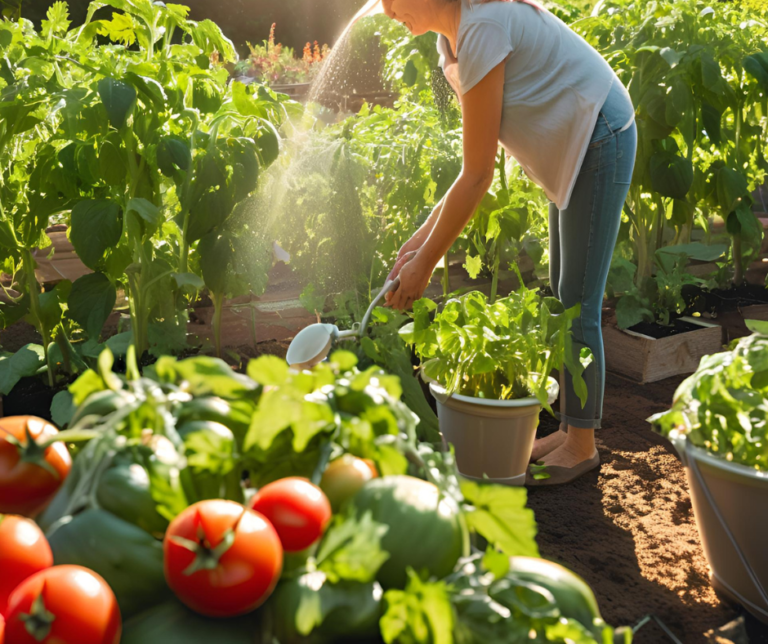Introduction to Yeast Water for Gardening
If you’re seeking a natural and eco-friendly solution to boost the growth of your vegetables, such as garlic, tomatoes, and cucumbers, then yeast water for growing vegetables is a fantastic choice. This simple homemade fertilizer provides essential nutrients and promotes healthy, fast-growing plants. By using yeast water for growing vegetables, you can enrich your soil naturally and increase your yield. Read on to learn how to make and apply yeast water for growing vegetables effectively in your garden.
Understanding Yeast Water
What is Yeast Water?
Yeast water is a nutrient-rich, fermented solution created by mixing water, yeast, and a sugar source such as fruits or honey. The yeast ferments the sugars, producing a variety of beneficial nutrients and bacteria that enrich the soil and feed the plants.
Yeast water has been used by many gardeners because of its simplicity and effectiveness. It promotes microbial activity in the soil, which boosts plant growth naturally.
Benefits of Yeast Water for Plants
- Provides essential nutrients, such as B vitamins and amino acids, that encourage growth.
- Enhances soil health by increasing the presence of beneficial microorganisms.
- Acts as a natural defense booster for plants, helping them resist pests and diseases.
- Improves the overall plant yield and flavor of produce like garlic and tomatoes.
If you’re interested learn about the effects of yeast on Soil Health and Yeast
Application of Yeast Water for Garlic, Tomatoes, and Cucumbers
Yeast Water for Growing Garlic
Garlic requires nutrient-dense soil for optimal growth, and yeast water can provide this extra boost. Here’s how to effectively use yeast water for garlic:
- When to apply: Use yeast water when planting garlic cloves and during the bulb formation phase.
- How to apply: Dilute yeast water in a 1:10 ratio with water and apply it to the garlic bed.
- Benefits: Improves bulb size and helps to ward off soil-borne diseases.
For those who are interested in other garlic-related tips, you may find the article on how to make fermented garlic and honey helpful in boosting your health as well as your garden.
Yeast Water for Growing Tomatoes
Tomatoes are heavy feeders, requiring consistent nutrition throughout the growing season. Here’s how yeast water helps:
- Seedling stage: Apply yeast water when the first true leaves appear.
- Flowering stage: Water the plants with yeast water every two weeks to enhance fruit formation.
- Advantages: Improves fruit size, increases yield, and strengthens the plant’s natural defenses.
If you’re looking to dive deeper into tomato care, you can check out the comprehensive guide on growing tomatoes at home for more details.
Yeast Water for Growing Cucumbers
Cucumbers are also big feeders, and yeast water can help them thrive. Here’s how you can use it:
- When to apply: Apply yeast water during the seedling phase and continue using it throughout the growing season.
- How to apply: Water cucumber plants with diluted yeast water every 10-14 days.
- Benefits: Promotes faster growth, prevents diseases, and enhances the flavor and texture of cucumbers.
Best Practices for Using Yeast Water in the Garden
To get the best results with yeast water, follow these best practices:
- Dilution: Always dilute yeast water before applying it to your plants (a 1:10 ratio of yeast water to regular water is recommended).
- Application method: Use a watering can to evenly distribute the solution across the soil.
- Combine with other fertilizers: Yeast water works well when combined with other organic fertilizers, such as manure tea or compost tea. For more on this, you can read how to boost your plants with manure tea.
Common Problems and Solutions
While yeast water is highly beneficial, there are a few issues that gardeners may encounter:
- Over-application: Too much yeast water can cause nutrient imbalances, leading to yellowing leaves and stunted growth.
- Inconsistent fermentation: If the yeast water has a foul smell, discard it and prepare a new batch.
- Inconsistent results: Ensure that all plants receive even application to avoid uneven growth in your garden.
FAQs About Yeast Water
Can I use yeast water on all plants?
While yeast water is excellent for many plants, it works best on heavy feeders like garlic, tomatoes, and cucumbers. Be cautious with more delicate plants that require less nutrition.
How long does yeast water take to work?
Results can be seen within 1-2 weeks, with noticeable improvements in plant growth and overall health.
What are the signs of overwatering with yeast water?
Signs of overwatering or excessive application of yeast water include wilting, yellowing leaves, and slow growth.
Conclusion
Using yeast water for growing garlic, tomatoes, and cucumbers is an effective and sustainable gardening practice. Not only does it enrich the soil, but it also enhances the health and yield of your crops. By following the guidelines and utilizing other natural fertilizers, you can create a thriving garden.
For more tips and strategies on growing different plants, you can explore guides like growing sunflowers from seed or companion planting with herbs to further improve your gardening success.
